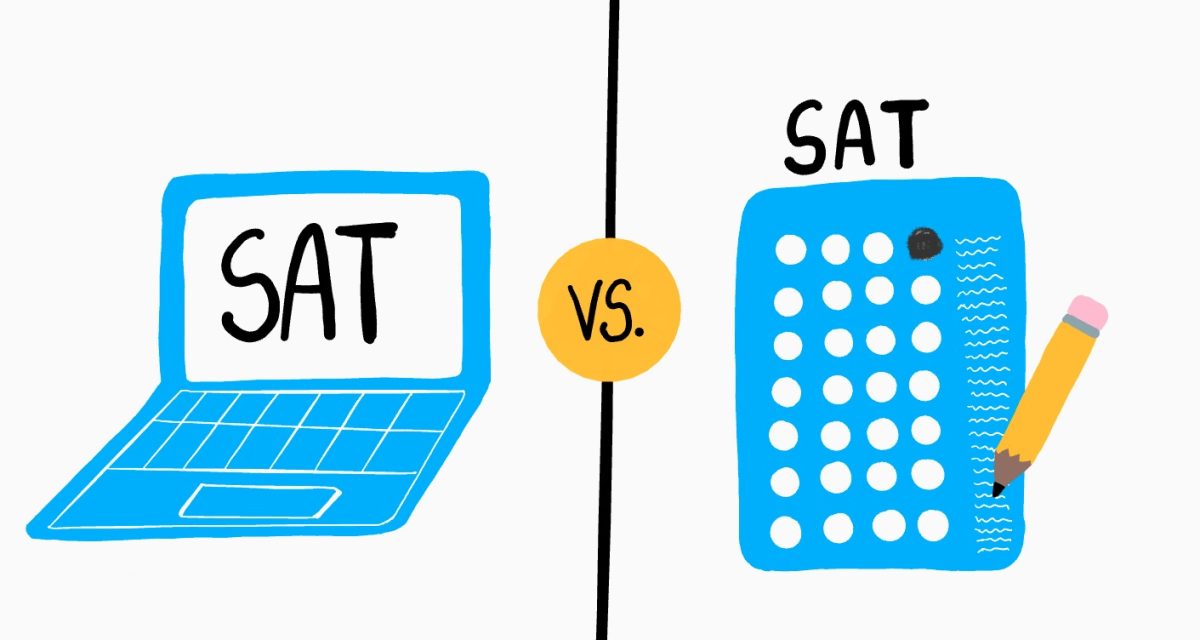A year ago, if you walked into any PSAT or SAT testing room, you would’ve heard pencils scratching paper. On October 18th—when sophomores and juniors took this year’s PSAT— for the first time at South, you would’ve heard clicking keyboards instead.
In response to student and expert feedback, the College Board is making the PSAT and SAT digital, and shorter, in both time and content. In the US, the PSAT already went digital recently, and the digital SAT will debut in Spring 2024.
“I feel that a condensed test would help,” said Gargi Bansu (‘24) “Reading passages with shorter excerpts would definitely be better for me rather than longer ones that are more difficult and time-consuming.”
Changing the format to be digital makes test administration more convenient for the College Board. The College Board said on their website: “Going digital allows us to offer much more flexibility in terms of when, where, and how often the SAT is given, particularly for states, districts, and schools offering the SAT to all their students as part of SAT School Day.”
Going digital is supposed to prevent cheating and questions of test integrity. Each test will be unique, and based on student performance.
The new versions of both tests will consist of a format with performance modules that split up the reading, writing, and mathematics sections. Each section has two modules – using a student’s score on the first module, the second module will adjust the difficulty of questions.
In his seminar on the new PSAT and SAT, Jared Friedland, tutor and founder of The Playbook, a company that provides test-taking strategies, offered tips for success.
“You obviously want to try your very best,” Friedland said. “Just to reassure you, the algorithm of the exam[s] will take into account and rate the difficulty level of the current questions.”
Regarding new content, Friedland had explained earlier that the passages being used in reading and writing are now briefer, with fewer questions per passage, and the selection of pieces now includes poetry.
With shorter passages, students exercise different skills. “It’s absolutely vital that you learn how to quickly pinpoint the text’s main idea,” Friedland said.
The reading and writing sections will have two 32 minute modules, for a total of 54 questions. The math section mirrors this format, with two 35 minute modules, for a total of 44 questions.
In total, the new tests are each two hours and 14 minutes with 98 questions. This means more time per question than previously allotted, but less time and less questions overall.
Despite 80% student approval of the new tests in a College Board survey, student opinions on this new testing format vary.
Some students are anxious about the transition to a new format.
“While the actual difficulty may not be harder, it’s more along the line of not knowing the future questions or what the test[s] looks like,” said Rithanya Senthilvel (‘25). “That element of uncertainty might cause people to approach the test[s] differently than how they would on paper.”
Other students feel that the new tests address their concerns about the old SAT and PSAT.
“I think it might be easier for me cause I don’t want to have to write for three hours,” said Alexandra Verma (‘26).
Jared Friedland has a positive outlook on digital standardized testing.
“I do think that the functionality and the format of the forthcoming exam[s], the digital PSAT and SAT, is a significant improvement over the pencil and paper test[s].”





